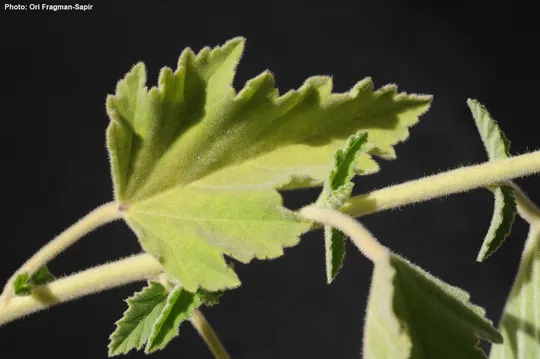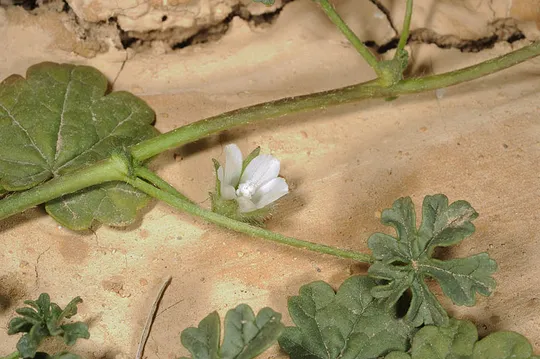Marsh-mallow Plant, Common Marsh-mallow
Althaea officinalis






Althaea officinalis is an ancient medicinal plant used to treat varied
medical problems, from the time of the Pharaohs. The leaves and roots contain mucilaginous substances,
flavonoids and tannins. Extractions made from them calm coughs, skin
infections, heal wounds and solve various digestive system problems. Recent
experiments have proved its effectiveness in curing coughs (Engels, 2007).
Althaea officinalis survives in Israel
only in the Hula Valley at a single site, Ahu Gonen. It is extinct at other
sites in the region, from the Jordan and from the Brid (Nuhela). Eig, Naftulsky
and Zohary collected A. officinalis from a number of regions in the coastal plain were it once grew, for
the Hebrew University Herbarium between the 1920s and 1950s, but the species
has become extinct in all of them. On the Carmel Coast, A.
officinalis was collected from Atlit and in Kebara; in the Sharon
– from Binyamina, Gan Shmuel and Hadera; in Pleshet– from Wadi Rubin (Wadi Sorek).
Stream banks and
marshes.
The genus Althaea consists of 12 species found in Europe, North Africa,
the Middle East, the Caucasus and eastwards to northeast Siberia. Most of the
species are perennial herbaceous plants and some are annuals. The flowers are
small relative to close genera (Alcea, Malva). The calycule has 6-12
lobes. A. officinalis is the most common species and has the broadest distribution
in the genus.
·
Althaea officinalis is on the verge
of actual extinction in Israel, since the vast majority of the populations in
sites where it was once found are extinct. It has completely disappeared from
the coastal plain.
·
Populations in our region are small
and fragmented, which may contribute to its extinction because of reproductive,
genetic and demographic factors.
·
There is no doubt that the desiccation
and deterioration of streams, marshes and other humid habitats on the coastal
plain led to the extinction of A. officinalis in this region. At the only remaining
site – the survival of the population is not ensured.
·
The only site where the plant is still
found – Ahu Gonen - is in a declared nature reserve.
·
Like many plants of moist habitats, the
global distribution of A. officinalis is broad. It does not appear in the Red Books of
European countries, but it is probably threatened in the countries at the edge
of its range in the Middle East.
The Ahu Gonen population
should be found and seeds collected from it without harming the mature plants,
for growing seedlings. The seedlings can be grown in backup collections in
botanical gardens, to rehabilitate the remaining populations and create new
populations in suitable moist places, some at sites where the species once grew.
The ecology of the species should be studied in order to manage the water
regime at Ahu Gonen, where it survived, and in other places marked for
restoration.
Althaea officinalis is a Euro-Siberian
species with a broad distribution in Europe and temperate Asia up to Siberia. Its
southern distribution area is the Mediterranean Basin, Middle East and
eastwards to Turkistan and Afghanistan (Cullen, 1967). Unlike Europe, where it
is a common plant occupying extensive continuous habitats, in our region the
populations are small and fragmented. In North America, it is considered an
exotic invasive species.
Althaea
officinalis is a perennial plant of stream banks and marshes that is on the brink of
extinction in Israel. It is an extremely rare plant that once grew on the
coastal plain as well, but is now found only at a single site in the Hula
Valley. Its habitat is extremely vulnerable. Israel lies at the southern edge of
its distribution area.
Cullen, L. 1967. in Ds P.H. (ed.) Flora of Turkey. Vol. 2. pp. 419-420.
Engels G. 2007. Marshmallow herbalgram 75, pp. 1-5.
Current Occupancy Map
| 1000 squre meter pixel | 5000 squre meter pixel | 10000 squre meter pixel | |
|---|---|---|---|
| number of observations | 0 | 0 | 0 |
| in total pixels | 0 | 0 | 0 |
| Family | Malvaceae |
| Classification | On the endangered species list |
| Ecosystem | Mediterranean |
| Chorotype | Euro – Siberian - Mediterranean - Irano – Turanian |
| Conservation Site | Ahu Binyamina |
| Rarity |
1
6
6
|
|---|---|
| Vulnerability |
0
4
4
|
| Attractiveness |
0
2
4
|
| Endemism |
0
0
4
|
| Red number |
1
6.8
10
|
| Peripherality | N |
| IUCN category | DD EW EX LC CR EN VU NT |
| Threat Definition according to the red book | Critically endangered |
 Based on:
Based on:






